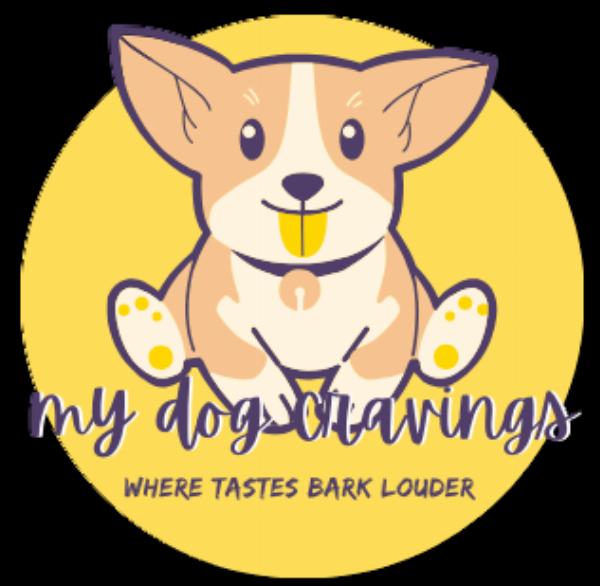The Ultimate Guide to Making Homemade Wet Dog Food: Recipes, Tips, and Nutritional Insights

Strong 8k brings an ultra-HD IPTV experience to your living room and your pocket.
### **Introduction**
Feeding your furry friend a balanced diet is crucial for their health and well-being. Many pet owners are turning to homemade wet dog food recipes to ensure their dogs are getting the best nutrition possible. Not only does making your own dog food give you control over the ingredients, but it also allows you to tailor meals to your dog’s specific dietary needs.
### **Understanding Your Dog’s Nutritional Needs**
Before diving into recipes, it’s essential to understand what nutrients your dog needs. Dogs require a balance of proteins, carbohydrates, fats, vitamins, and minerals to stay healthy. These needs can vary based on their age, breed, and any special dietary considerations they might have.
### **Benefits of Homemade Wet Dog Food**
Making wet dog food at home comes with several benefits. You have complete control over what goes into your dog’s food, ensuring no harmful preservatives or fillers. You can customize the recipe to meet your dog's unique nutritional needs, whether they require a high-protein diet or have food allergies. Additionally, homemade food is often fresher and of higher quality than commercial options.
### **Essential Ingredients for Wet Dog Food**
A balanced homemade wet dog food recipe includes proteins, carbohydrates, fats, vegetables, fruits, and essential vitamins and minerals. These components work together to keep your dog healthy and energetic.
### **Choosing the Right Protein Sources**
Proteins are the building blocks of your dog’s diet. Common protein sources include:
- **Chicken**: A lean and affordable option.
- **Beef**: High in protein and essential nutrients.
- **Fish**: Rich in omega-3 fatty acids.
- **Lamb**: Ideal for dogs with beef or chicken allergies.
- **Plant-based proteins**: Such as lentils and chickpeas for dogs that need less animal protein.
### **Incorporating Carbohydrates**
Carbohydrates provide energy and fiber. Excellent choices are:
- **Rice**: Easy to digest and gentle on the stomach.
- **Oats**: High in fiber and good for digestion.
- **Potatoes**: A good source of vitamins and minerals.
- **Sweet potatoes**: Rich in vitamins and antioxidants.
- **Quinoa**: A high-protein grain.
### **Healthy Fats for Your Dog**
Fats are essential for energy and a healthy coat. Include fats such as:
- **Fish oil**: Great for skin and coat health.
- **Flaxseed oil**: Provides omega-3 fatty acids.
- **Coconut oil**: Good for digestion and skin.
- **Chicken fat**: Adds flavor and energy.
### **Vegetables and Fruits in Dog Food**
Vegetables and fruits provide vitamins and fiber. Some good options are:
- **Carrots**: High in beta-carotene and fiber.
- **Peas**: Rich in vitamins and protein.
- **Blueberries**: Packed with antioxidants.
- **Spinach**: Contains iron and vitamins.
- **Pumpkin**: Excellent for digestion.
### **Homemade Wet Dog Food Recipe**
#### **Ingredients**
- 1 pound of ground chicken
- 1 cup of brown rice
- 1/2 cup of chopped carrots
- 1/2 cup of peas
- 1/4 cup of blueberries
- 1 tablespoon of fish oil
- 2 cups of water
#### **Preparation Instructions**
1. **Cook the Rice**: In a large pot, bring 1 cup of brown rice and 2 cups of water to a boil. Reduce heat, cover, and simmer until the rice is cooked.
2. **Cook the Chicken**: In a separate pan, cook the ground chicken thoroughly.
3. **Combine Ingredients**: Once the rice and chicken are cooked, combine them in the large pot.
4. **Add Vegetables and Fruits**: Add chopped carrots, peas, and blueberries to the pot.
5. **Add Fish Oil**: Stir in the fish oil for healthy fats.
6. **Simmer**: Allow the mixture to simmer on low heat for about 10 minutes.
7. **Cool and Serve**: Let the food cool before serving it to your dog. Store any leftovers in the refrigerator.
### **Cooking Tips and Tricks**
#### **Portion Sizes**
Determine the right portion size based on your dog's weight and activity level. Consult your vet for specific guidelines.
#### **Storage Guidelines**
Store homemade wet dog food in airtight containers in the refrigerator for up to five days or freeze it for longer storage.
#### **Balancing Nutrients**
Ensure that the recipe provides a balanced diet by including all essential nutrients. Consult with a veterinarian or a pet nutritionist if needed.
### **Common Mistakes to Avoid**
#### **Overfeeding**
Avoid overfeeding by sticking to recommended portion sizes.
#### **Using Harmful Ingredients**
Never use ingredients that are toxic to dogs, such as onions, garlic, chocolate, or grapes.
#### **Ignoring Specific Dietary Needs**
Always consider your dog's specific dietary needs, allergies, or health conditions when preparing their food.
### **Adjusting the Recipe for Different Needs**
#### **Puppies**
Puppies need more protein and calories for growth. Adjust the recipe by increasing the protein content.
#### **Senior Dogs**
Senior dogs may need fewer calories and more fiber. Adjust accordingly to prevent weight gain and support digestion.
#### **Dogs with Allergies**
If your dog has food allergies, substitute ingredients with hypoallergenic options.
#### **Weight Management**
For overweight dogs, reduce the fat content and increase fiber to help them feel full longer.
### **Cost-Effectiveness of Homemade Wet Dog Food**
#### **Comparing Costs with Commercial Food**
Homemade wet dog food can be more cost-effective than premium commercial options, especially when bought in bulk.
#### **Budget-Friendly Ingredient Options**
Use affordable protein sources like chicken and opt for seasonal vegetables to keep costs low.
### **Feeding Guidelines**
#### **How Much to Feed**
The amount depends on your dog's size, age, and activity level. Generally, dogs need about 2-3% of their body weight in food per day.
#### **Frequency of Meals**
Feed adult dogs twice a day, while puppies may require 3-4 meals daily.
#### **Monitoring Your Dog's Health**
Regularly monitor your dog's weight, coat condition, and energy levels to ensure they're thriving on their new diet.
### **Conclusion**
Homemade wet dog food is a fantastic way to provide your dog with fresh, nutritious meals tailored to their specific needs. By understanding your dog's nutritional requirements and choosing the right ingredients, you can create delicious and healthy meals. Give it a try and see the difference in your dog's health and happiness!
### **FAQs**
1. **Can I freeze homemade wet dog food?**
Yes, you can freeze it in portion-sized containers for up to three months.
2. **How do I know if my dog likes the new food?**
Watch for signs like enthusiasm during meal times and consistent eating.
3. **What if my dog has a food allergy?**
Substitute the allergenic ingredient with a hypoallergenic alternative and consult your vet.
4. **How long can I store homemade
Note: IndiBlogHub features both user-submitted and editorial content. We do not verify third-party contributions. Read our Disclaimer and Privacy Policyfor details.


